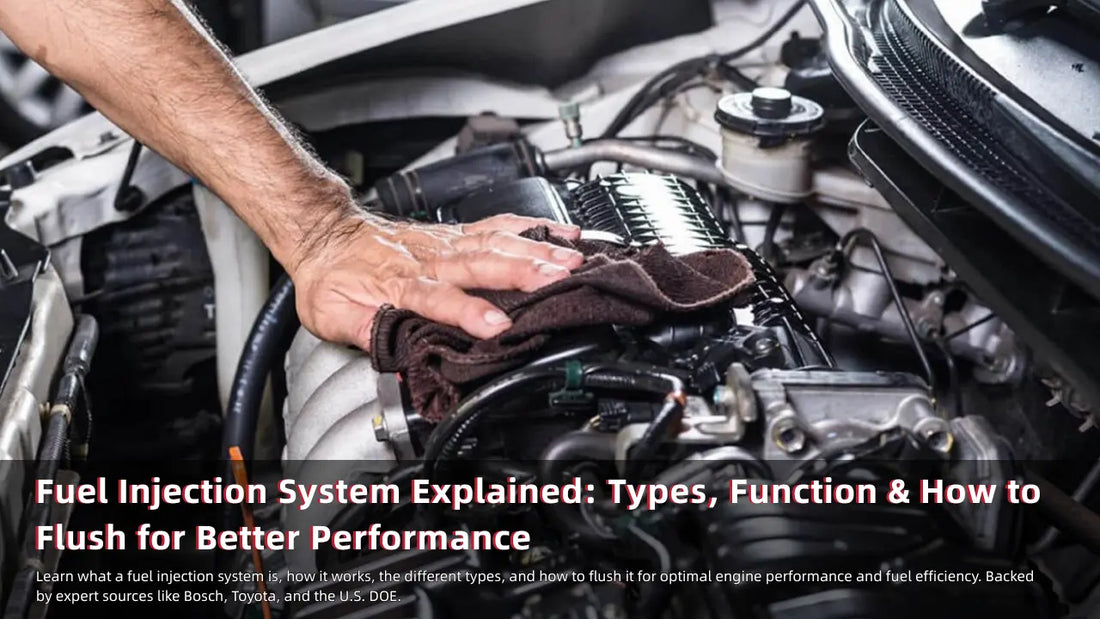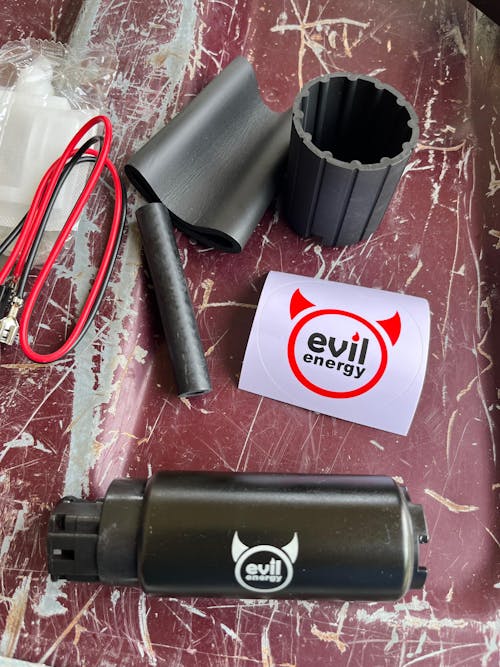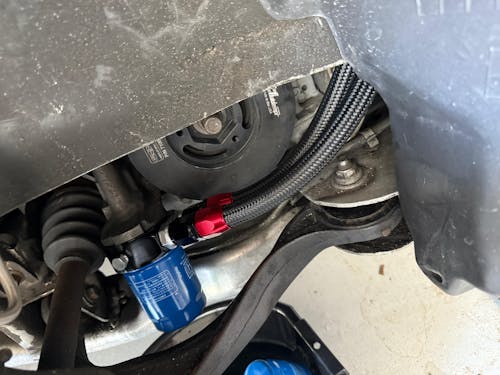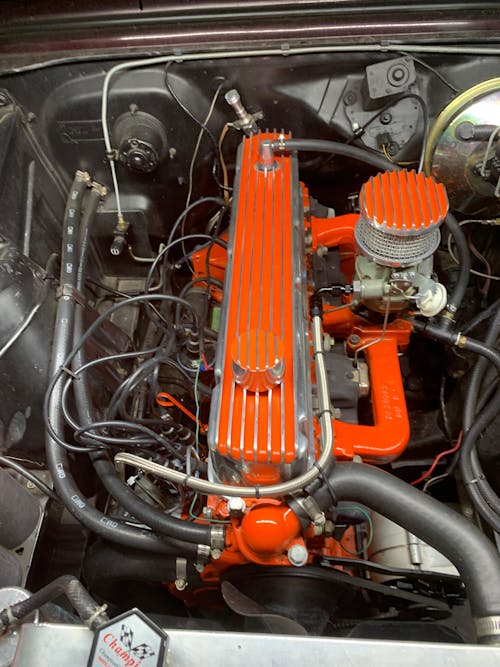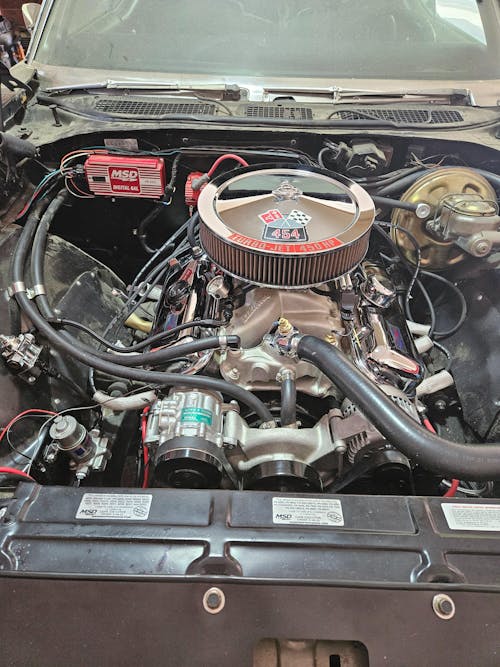Understanding the Fuel Injection System: Function, Types, and Maintenance
Introduction
The fuel injection system is the heart of modern automotive engines — it ensures efficient fuel delivery, precise combustion, and reduced emissions. In this comprehensive guide, we’ll explain what a fuel injection system is, what it does, the main types, and how to flush it properly for long-lasting performance.
This article integrates verified data from authoritative sources including Bosch Automotive, Toyota Global, the U.S. Department of Energy, and Encyclopaedia Britannica, while also introducing high-quality aftermarket solutions such as the EVIL Energy EFI Fuel System Kit for optimal engine upgrades.
What Is a Fuel Injection System?
According to the Bosch Automotive Handbook (10th Edition, 2020),
-
'Fuel injection systems deliver fuel into the engine’s combustion chambers under high pressure, ensuring precise metering and atomization for optimal combustion.'
In simple terms, a fuel injection system replaces the traditional carburetor. It sprays finely atomized fuel directly into the intake manifold or combustion chamber, allowing for controlled and efficient combustion.
The Toyota Global Powertrain Division describes it as:
-
'A system that precisely measures and injects fuel into the engine according to driving conditions, improving performance and reducing emissions.'
Modern systems rely on an Engine Control Unit (ECU) to process sensor data — including air pressure, oxygen levels, and throttle position — and determine the perfect amount and timing of fuel injection.
What Does the Fuel Injection System Do?
The fuel injection system ensures that your engine runs smoothly, cleanly, and efficiently. Its main functions include:
-
Accurate Fuel Delivery – precisely controlling how much fuel enters each cylinder.
-
Efficient Atomization – converting fuel into a fine mist for optimal combustion.
-
Performance Optimization – maintaining the right air-fuel ratio under varying load and temperature conditions.
-
Emission Control – reducing pollutants by ensuring complete combustion.
The U.S. Department of Energy’s Alternative Fuels Data Center (AFDC) notes:
-
'Fuel injection systems have largely replaced carburetors in modern vehicles because they provide more accurate fuel metering, resulting in better fuel economy and lower emissions.' (DOE AFDC, Fuel Injection Overview)
Types of Fuel Injection Systems
There are several main types of fuel injection systems, each representing a step forward in precision and efficiency:
| Type | Description | Typical Use |
|---|---|---|
| Mechanical Fuel Injection (MFI) | Uses mechanical pressure and timing to inject fuel. | Classic and diesel engines |
| Electronic Fuel Injection (EFI) | Controlled electronically via ECU and sensors. | Most modern gasoline engines |
| Multi-Point Fuel Injection (MPFI) | Each cylinder has an injector near the intake valve. | Mid-range and high-efficiency cars |
| Throttle Body Injection (TBI) | Single or dual injectors in the throttle body, a transition from carburetor systems. | Early electronic systems |
| Direct Fuel Injection (GDI/DFI) | Injects fuel directly into the combustion chamber for maximum efficiency and power. | Modern high-performance engines |
As Encyclopaedia Britannica defines it:
-
'Fuel injection is a system for admitting fuel into internal-combustion engines, in which measured amounts of fuel are sprayed under pressure into the air entering the engine.' (Britannica – Fuel Injection)
How to Flush the Fuel Injection System
Regular maintenance of your fuel injection system is crucial for maintaining peak engine performance. Over time, carbon deposits and impurities can clog injectors, causing poor idling, reduced power, and higher fuel consumption.
Method 1: Additive Cleaning (Fuel Tank Treatment)
-
Add a bottle of fuel injector cleaner to a half-full fuel tank.
-
Drive for at least 20–30 minutes to allow the cleaner to circulate. Suitable for routine preventive maintenance.
Method 2: Pressurized System Cleaning (Professional Service)
-
Disable the fuel pump and connect a fuel injection cleaning machine to the fuel rail.
-
Run the engine using a special cleaning solvent instead of gasoline for 10–15 minutes. Provides a deep clean without removing injectors.
Method 3: Injector Removal and Ultrasonic Cleaning
-
Remove the injectors from the engine.
-
Use an ultrasonic cleaning device to remove stubborn deposits.
-
Reinstall injectors and test spray patterns. Best for severe clogging, typically performed by professionals.
Maintenance Interval
Perform a fuel injection system flush every 20,000–30,000 km (12,000–18,000 miles) or when experiencing rough idling, poor acceleration, or increased fuel consumption.
Upgrade Recommendation: EVIL Energy EFI Fuel System Kit
When maintaining or upgrading your EFI (Electronic Fuel Injection) setup, using a complete and reliable kit ensures consistent fuel pressure and delivery.
The EVIL Energy EFI Fuel System Kit provides a comprehensive solution for electronic fuel injection performance. It includes:
-
High-flow fuel pump for stable pressure,
-
Precision fuel filters and regulators,
-
Durable fuel hoses and fittings,
-
Designed for EFI conversions or system replacements in high-performance applications.
These kits are engineered to meet modern EFI standards — delivering the reliability and flow stability your engine needs for accurate fuel injection and consistent power delivery.
Pro Tip: When performing a system flush or injector replacement, consider upgrading to a quality EFI fuel system kit like IEVIL Energy’s to ensure long-term stability and performance improvement.
Conclusion
The fuel injection system is the heart of modern internal combustion engines. It ensures precise fuel metering, efficient combustion, and lower emissions. Supported by decades of engineering innovation — from Bosch’s precision design to Toyota’s real-world applications — fuel injection technology has revolutionized vehicle performance and efficiency.
By understanding how your fuel injection system works and maintaining it properly through periodic flushing, you can extend your engine’s life, improve fuel economy, and ensure consistent, reliable performance.
References (Authoritative Sources)
-
Bosch Automotive Handbook, 10th Edition (2020), Chapter 5.2. Stuttgart: Robert Bosch GmbH.
-
Toyota Global – Powertrain Technology Section, 'How a Fuel Injection System Works.'
-
Encyclopedia Britannica – Fuel Injection: https://www.britannica.com/topic/fuel-injection


![[20FT] EVIL ENERGY PTFE Fuel Line Kit, complete black hose & fittings set, 180-day return](http://www.ievilenergy.com/cdn/shop/files/Test-2025-Evilenergy-125598065_165x.png?v=1742144807)
![[16FT] EVIL ENERGY PTFE Fuel Line Kit, black braided hose, fittings, free shipping & return](http://www.ievilenergy.com/cdn/shop/files/Test-2025-Evilenergy-125598171_165x.png?v=1742144807)
![CPE Fuel Line[25FT]](http://www.ievilenergy.com/cdn/shop/files/25FTCPE_FuelLine_165x.png?v=1735220649)
![CPE Fuel Line[20FT]](http://www.ievilenergy.com/cdn/shop/files/20FTCPE_FuelLine_165x.png?v=1735220649)
